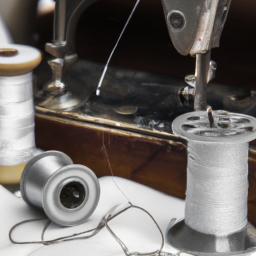
Timeline History of Sewing Machine
Early 18th Century: Invention of the First Sewing Machine
The first iteration of the sewing/” title=”Stitching Stories: A Beginner's Guide to Sewing”>sewing machine was invented by Englishman Thomas Saint in 1790. Although his machine was not widely adopted, it laid the foundation for future innovations in the industry.
Mid-19th Century: The Rise of Elias Howe
American inventor Elias Howe patented the first practical sewing machine in 1846. His invention featured an automatic thread feed and a needle with an eye at the point, revolutionizing the way garments were made.
1851: Isaac Singer and the Mass Production of Sewing Machines
Isaac Singer, an entrepreneur, improved upon earlier designs and patented his own sewing machine in 1851. It incorporated a foot pedal mechanism for better control and was the first to be marketed for home use. This marked the beginning of sewing machines becoming more accessible to the general public.
1877: Introduction of the Electric Sewing Machine
The first electric sewing machine was introduced by the Singer Sewing Machine Company in 1877. This new technology greatly increased the speed and efficiency of sewing, making it an essential tool for textile factories and professional garment makers.
20th Century: Advancements and Innovations
Throughout the 20th century, numerous advancements were made to sewing machines. Notable milestones include the introduction of zigzag stitching, automatic threading, and computerized controls. These innovations made sewing easier and more versatile, appealing to both professionals and hobbyists.
Present Day: Sewing Machines for Every Need
Today, sewing machines come in various forms to suit different purposes. From compact and portable machines for personal use to industrial-grade models used in large-scale production, there is a sewing machine for every need. Additionally, modern sewing machines often include advanced features like touchscreen displays, embroidery capabilities, and precise stitching options.
In Conclusion
The rich history of the sewing machine has paved the way for countless advancements in the textile industry. From humble beginnings, the sewing machine has evolved into an indispensable tool for both professionals and enthusiasts alike. As technology continues to progress, we can expect even more exciting developments in the future of sewing machines.
References:




